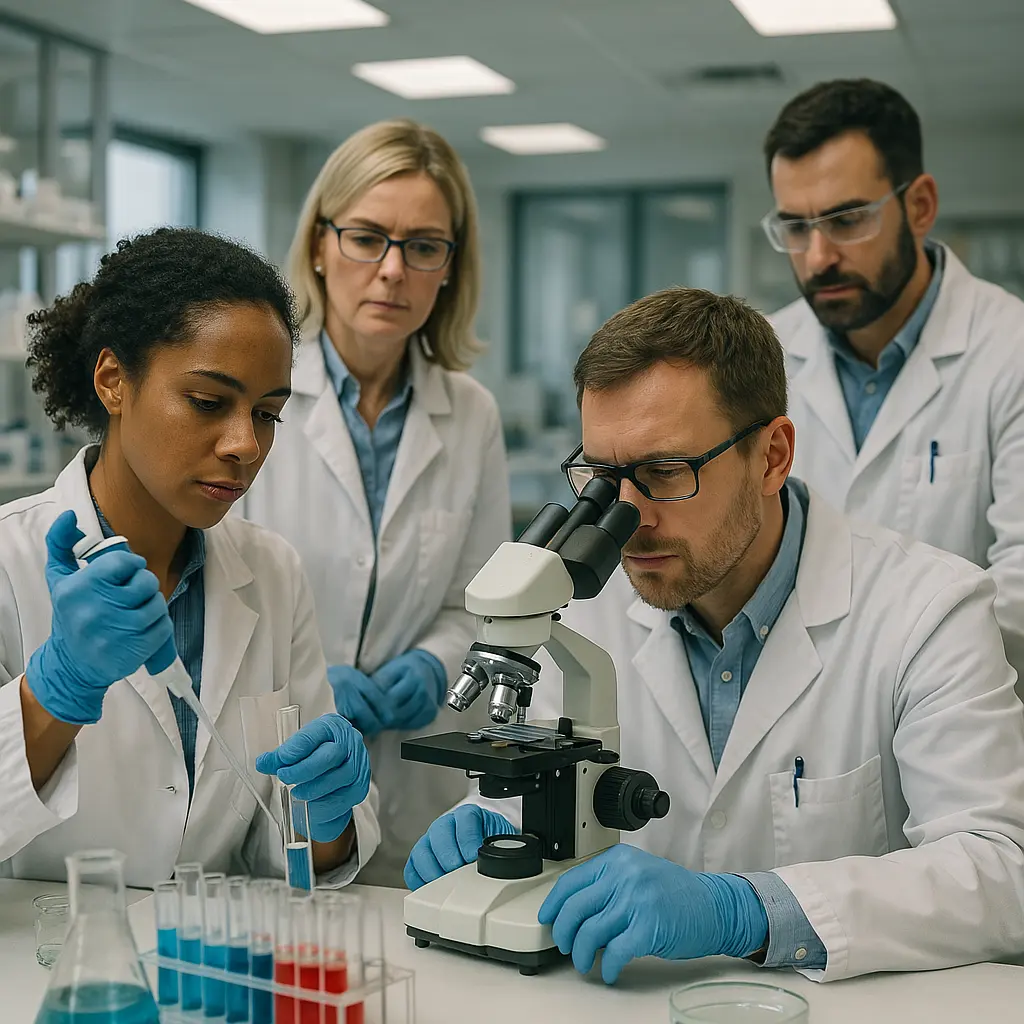Introduction
When injuries happen, recovery time can feel frustratingly slow. Whether it’s from sports, exercise, or daily strain, the body’s natural healing process often needs support. This is where injury repair peptides have gained growing attention. At [Ayvé], we provide premium research-grade peptides like BPC-157 and TB-500, which are being studied for their potential role in supporting tissue regeneration, reducing inflammation, and promoting faster recovery. If you’re seeking innovative ways to explore how science may accelerate healing, peptides offer a compelling area of research.
Understanding Injury Repair Peptides
What Are Peptides?
Peptides are short chains of amino acids that act as building blocks in the body. Unlike large proteins, peptides can interact with receptors and signal pathways more efficiently, often leading to targeted effects. In the context of injury repair, certain peptides are thought to play a role in tissue regeneration and recovery.
Why Focus on Injury Repair?
When the body sustains damage, whether it’s a torn muscle, ligament strain, or micro-tears from intense training, recovery depends on cellular communication and repair mechanisms. Research into peptides such as BPC-157 and TB-500 is centered on how these compounds may enhance the body’s natural ability to respond to injury, reduce inflammation, and encourage quicker injury repair.
BPC-157 and Its Role in Injury Repair
BPC-157, short for Body Protection Compound-157, is a peptide originally derived from gastric proteins. Studies suggest it may support the healing of muscles, tendons, and ligaments.
Potential Benefits for Injury Repair
- May encourage new blood vessel formation (angiogenesis), crucial for tissue repair.
- May support tendon-to-bone healing, a common challenge after sports injuries.
- May reduce inflammation that slows the natural injury repair process.
Although research is ongoing, the results so far have placed BPC-157 as a promising peptide in the field of recovery science.
TB-500 and Injury Repair
TB-500 is a synthetic version of thymosin beta-4, a naturally occurring peptide in the body. It has been researched for its ability to promote cell migration and tissue regeneration.
Why TB-500 Matters for Injury Repair
- Encourages cell growth and movement to damaged areas.
- May accelerate wound healing and recovery of muscle tissue.
- May enhance flexibility and reduce recovery times after strain or injury.
Both TB-500 and BPC-157 have drawn attention because they target different mechanisms of injury repair, making them potentially complementary in research settings.
Synergy of BPC-157 and TB-500 in Injury Repair
While each peptide has unique mechanisms, combining them in research may offer broader benefits for injury repair. BPC-157 focuses on vascular and tendon healing, while TB-500 encourages cellular regeneration and mobility. This synergy may lead to faster and more comprehensive recovery models being studied by researchers.
Key Points of Synergy
- BPC-157 supports tendon and ligament repair.
- TB-500 promotes muscle and skin tissue regeneration.
- Together, they may offer a holistic approach to injury repair.
The Science Behind Injury Repair Peptides
Research into injury repair peptides is still ongoing, but early studies highlight their potential:
- Animal studies suggest accelerated healing in muscle and tendon injuries.
- Observations point to reduced inflammation and scarring.
- Investigations explore their role in protecting soft tissues during recovery.
While more clinical research is needed, these findings have made peptides an exciting topic for scientists focusing on injury repair solutions.
Why Choose Ayvé for Injury Repair Peptides?
At [Ayvé], we understand the importance of quality in research. Our peptides are supplied strictly for laboratory use, ensuring consistency and purity for reliable results. Researchers exploring injury repair peptides like BPC-157 and TB-500 rely on premium-grade compounds to achieve meaningful outcomes in their studies.
Our Commitment
- Premium-quality peptides for reliable research.
- Transparent supply chain and rigorous testing.
- Focus on providing peptides that support cutting-edge research into injury repair.
Practical Applications in Injury Repair Research
Although peptides are not approved for medical use, researchers are investigating how they may influence recovery in different contexts:
- Sports Science – Exploring recovery after intense physical activity.
- Orthopedic Research – Studying tendon, ligament, and joint healing.
- Tissue Regeneration Studies – Investigating cellular repair pathways.
Each application underscores the growing scientific interest in peptides as part of the future of injury repair research.
The Future of Injury Repair Peptides
As research continues, the field of injury repair peptides may expand into broader medical and sports-related studies. Innovations in regenerative medicine are moving toward precision treatments, and peptides like BPC-157 and TB-500 may play an important role in that journey.
Conclusion
Injuries can slow down progress and performance, but science is uncovering new ways to potentially accelerate healing. Injury repair peptides such as BPC-157 and TB-500 are at the forefront of research, offering exciting insights into how the body recovers. At [Ayvé], we are proud to provide researchers with premium-grade peptides to support these investigations. Whether you are studying tendon healing, muscle regeneration, or overall recovery, exploring the role of peptides could transform the future of injury repair.
